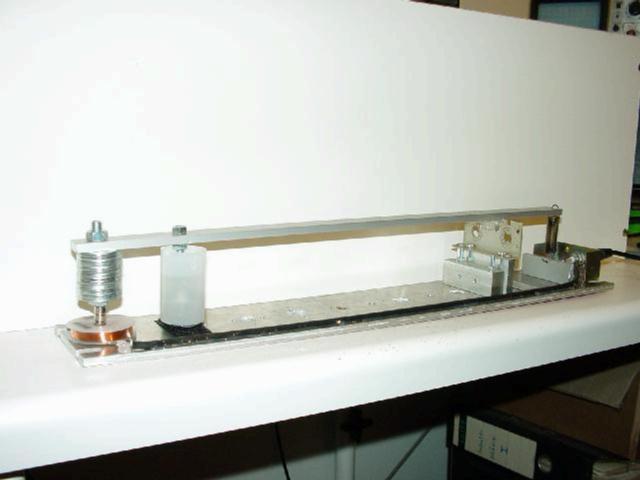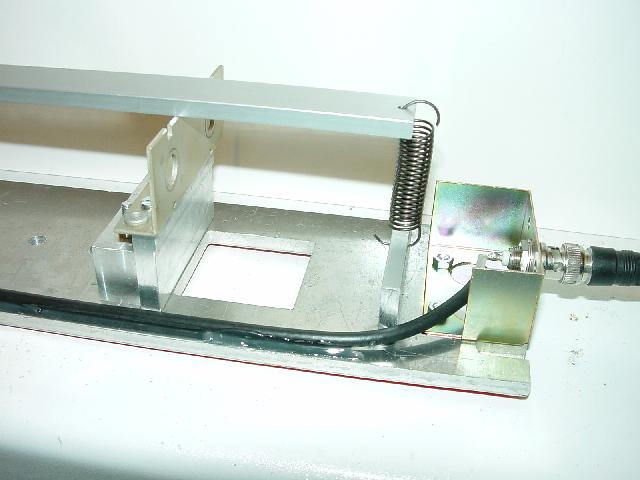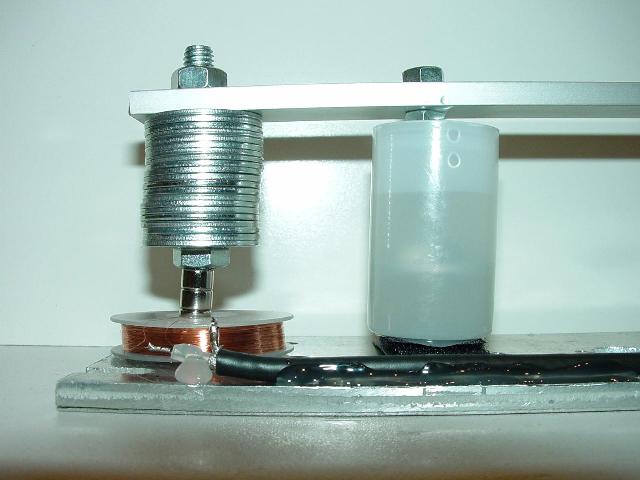
|

|
|
A simple short period vertical seismometer, 18-MAR-2003
(This device is covered in my book.) |
|---|
|
Everybody knows recipes for people who do not want to work for hours and hours in the kitchen but still want to eat something else than pizza. These recipes are sometimes really great not just because it does not take too much time to create the meal but mostly because sometimes they just taste great. An example for this is the 5 minute chocolate cake of my girl friend Rikka. The following page contains some kind of a recipe, too - a recipe to build a very simple, but yet very useful, short period vertical seismometer. Like the chocolate cake, it does not take long to build the instrument, if you have a good scrap yard where to get the necessary ingredients. It took me about three hours from the idea to the working instrument (without an amplifier, but you can use this seismic amplifier which is quite simple to build, too). |

|
The picture on the left shows the completed instrument. Its design is very simple: Moutned on a stable base plate (made from a scrapped front plate) are four devices (from right to left):
|
|
The picture on the right shows the spring mount and the pendulum support, while on the far right the BNC jack can be seen where the unamplified raw signal from the sensor coil can be picked up. The spring is, to be honest, the only part which is not from scrap, I bought it at a local hardware store for about 2 Euro. The rest of the seismometer is built around this spring, i.e. the pendulum length, the height of the overall construction and the counter weight dimensions were chosen to get a flat pendulum resting position. The only thing about the pendulum support is that it should be as sharp and as even as possible to avoid any unlinear pendulum motion. Everything else is completely uncritical for a simple instrument like this. |

|

|
The next and last picture on the left shows the sensor, the counter weight and the damping mechanism of the seismometer. The sensor consists of a small coil of copper wire which has been glued to the ground plate and connected to the coaxial cable which runs to the BNC jack at the right side of the instrument (see picture above). Inside the coil moves a stack of three neodymium magnets which are attached to the lower end of the pendulum counter weight. The counterweight is made from a stack of flat washers which turned out to be a good idea since the pendulum adjustment gets quite easy whith this arrangement. |
|
The damping mechanism consists of a small can filled with some damping fluid (for the first test shown here I used water but its damping coefficient is far too low, but cheap motor oil will do). In this damping fluid moves a large flat washer (of the same type as the flat washers used for the couter weight, actually) which is mounted on the pendulum, too. The can is attached to the base plate by a belt which enables one to adjust the can position to match the pendulum position. All in all this short period vertical seismometer can be actually built in a few hours if there is a good supply of individual parts like a metal sheet which can be used as the base plate, a coil, a can, some magnets, etc. Since the instrument is so simple, do not expect an extraordinary sensitivity or a great impulse response (but - much to my own surprise - the sensitivity as well as the impulse response turned out to be quite good on my prototype). It is by far not as sensitive as the more complicated Lehman seismometer but it is very well suited as a demonstration instrument and it is real fun to build this seismometer. Have fun with it! |